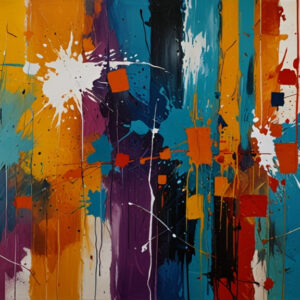Description
3D modeling is a digital process that creates a mathematical representation of a three-dimensional object using specialized software. This technology has gained immense popularity in various industries, including gaming, film, architecture, and fashion. In the context of retail, particularly plus-size fashion, 3D modeling allows brands to create detailed representations of their products, enhancing customer experience and streamlining the design and manufacturing process.
The Need for Plus-Size Fashion
The plus-size fashion industry has experienced significant growth over the last decade. According to a report by Market Research Future, the global plus-size clothing market is projected to reach USD 696.71 billion by 2025. Despite this growth, many plus-size consumers still struggle to find stylish, well-fitting clothing. Traditional retailers often neglect this demographic, resulting in a lack of options and dissatisfaction among customers.
Custom 3D modeling can address these challenges by providing brands with the tools to create tailored, stylish designs that cater specifically to plus-size individuals. By utilizing 3D modeling technology, retailers can enhance their product offerings, improve customer satisfaction, and ultimately boost sales.
Benefits of Custom 3D Model Art Creation
1. Personalization
One of the most significant advantages of custom 3D model art creation is the ability to personalize designs according to individual customer preferences. Retailers can create unique pieces that reflect the style, color, and fit preferences of their target audience. This level of personalization fosters a deeper connection between the brand and its customers, ultimately leading to increased loyalty and repeat purchases.
2. Cost Efficiency
Creating 3D models can significantly reduce costs associated with traditional design processes. By visualizing products digitally, brands can identify design flaws or improvements before moving to production. This minimizes the risk of costly mistakes, such as producing unsellable inventory. Additionally, 3D printing technology can streamline the manufacturing process, reducing production time and costs.
3. Enhanced Marketing
Custom 3D models provide brands with eye-catching visuals that can be used in marketing campaigns. High-quality 3D renderings can be utilized across various platforms, including websites, social media, and print materials. This engaging content helps brands stand out in a crowded market and attracts potential customers.
4. Improved Fit and Comfort
One of the main challenges in plus-size fashion is ensuring a proper fit. 3D modeling allows brands to create accurate representations of their clothing on diverse body types. This technology enables designers to test different fits and styles digitally, ensuring that the final product meets the needs of their customers. Improved fit leads to higher customer satisfaction and fewer returns.
5. Faster Prototyping
The traditional prototyping process can be time-consuming and costly. With 3D modeling, brands can quickly create virtual prototypes, allowing for rapid iterations and refinements. This speed enables retailers to bring new designs to market faster, keeping up with ever-changing fashion trends.
The Process of Custom 3D Model Art Creation
Creating custom 3D models for plus-size fashion involves several key steps:
1. Concept Development
The first step in the process is to develop a concept for the garment. This involves brainstorming ideas, sketching designs, and determining the overall style and aesthetic. Input from the target audience can be invaluable during this stage, as it helps ensure the designs resonate with potential customers.
2. 3D Modeling
Once the concept is finalized, designers use specialized software to create the 3D model. This process involves defining the garment’s dimensions, textures, colors, and other details. Popular software options for 3D modeling include Blender, Clo3D, and Tinkercad.
3. Virtual Fitting
After the 3D model is complete, brands can conduct virtual fittings. This stage allows designers to visualize how the garment will look and fit on different body types. Feedback from fit models or focus groups can help identify necessary adjustments.
4. Prototyping and Testing
Once the virtual fitting is complete, brands can create physical prototypes using 3D printing technology. This step enables designers to evaluate the garment’s fit, comfort, and overall appeal. Testing prototypes with real customers can provide valuable insights and further refinements.
5. Final Production
After finalizing the design and making necessary adjustments, brands can move into production. 3D modeling facilitates efficient communication between designers and manufacturers, reducing the chances of miscommunication and errors.
The Role of Technology in Custom 3D Model Art Creation
The rise of technology has significantly impacted the custom 3D model art creation process. Various tools and platforms are available to streamline and enhance the process:
1. 3D Printing
3D printing technology allows brands to create physical prototypes quickly and cost-effectively. This innovation enables designers to test their concepts and gather feedback before committing to full-scale production.
2. Augmented Reality (AR)
AR technology allows customers to visualize how garments will look on them before making a purchase. By integrating AR into their websites or mobile apps, brands can provide a more interactive shopping experience, increasing customer engagement and reducing returns.
3. Artificial Intelligence (AI)
AI can analyze customer data to identify trends and preferences, informing design decisions. By leveraging AI, brands can create products that better align with their target audience’s tastes and needs.
Case Studies of Successful Implementation
1. Savage X Fenty
Savage X Fenty, founded by Rihanna, has made waves in the plus-size lingerie market by prioritizing inclusivity and representation. The brand uses 3D modeling technology to create a diverse range of styles and sizes, catering to a wide audience. Their innovative approach has helped the brand achieve significant sales growth and establish a loyal customer base.
2. ASOS
ASOS is another example of a brand embracing 3D modeling technology. The online retailer offers a wide range of plus-size clothing, and its use of 3D modeling has streamlined the design process. ASOS has effectively utilized virtual fitting technology to provide a better shopping experience for its customers, resulting in increased sales and customer satisfaction.
3. Aerie
Aerie, a sub-brand of American Eagle Outfitters, is known for its commitment to body positivity and inclusivity. The brand uses 3D modeling to create realistic representations of its garments on diverse body types. This approach has resonated with customers, leading to significant growth in the plus-size segment and a positive brand image.
The Future of Custom 3D Model Art Creation
The future of custom 3D model art creation in plus-size fashion is bright. As technology continues to evolve, brands will have even more opportunities to create innovative and personalized designs. Some potential trends include:
1. Increased Use of AI and Machine Learning
As AI and machine learning technologies advance, brands will be able to analyze customer data more effectively, leading to more tailored designs. This data-driven approach will enhance the personalization of products, ensuring they meet the needs of diverse customers.
2. Expansion of 3D Printing Capabilities
Advancements in 3D printing technology will enable brands to produce more complex designs and materials. This evolution will allow for greater creativity in the design process, resulting in unique and fashionable plus-size garments.
3. Integration of AR and VR Technologies
The integration of augmented reality (AR) and virtual reality (VR) technologies will revolutionize the shopping experience. Customers will be able to virtually try on garments, providing a more immersive experience and reducing the likelihood of returns.
4. Sustainability Focus
As consumers become increasingly concerned about sustainability, brands will need to adopt eco-friendly practices. 3D modeling can play a crucial role in this transition by reducing waste in the design and manufacturing process. Brands that prioritize sustainability will likely attract more environmentally-conscious consumers.
Conclusion
Custom 3D model art creation presents a unique opportunity for plus-size stores to enhance their offerings, improve customer satisfaction, and increase sales. By leveraging the benefits of personalization, cost efficiency, and faster prototyping, brands can create innovative designs that cater to the diverse needs of their customers. As technology continues to evolve, the potential for custom 3D modeling in the plus-size fashion industry will only grow, paving the way for a more inclusive and stylish future.
In a retail landscape that is constantly changing, embracing these technological advancements will be essential for brands looking to thrive in the competitive world of plus-size fashion. With a commitment to understanding their customers and leveraging innovative tools, retailers can redefine what it means to provide fashionable and well-fitting clothing for all body types.





Reviews
There are no reviews yet.